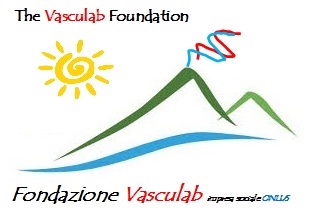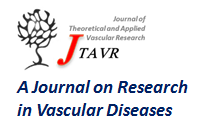DOI: 10.24019/issn.2532-0831
Online ISSN 2532-0831

Journal of Theoretical and Applied Vascular Research
Journal website: http://www.vasculab.eu/jtavr.xml
JTAVR 2018;3(2): 67-71

Flush closure of the sapheno-femoral junction with LASER

I Bihari1, F Zernovicky2, P Dragic3, G Ayoub1, S Bokros1, P Bihari1
2Klinika Cievnej Chirurgie. Národný Ústav Srdcových a Cievných Chorôb. Bratislava, Slovakia
3"Dr Dragic" clinic for laser vein surgery. Trg Mladenaca 4, Novi Sad, Serbia
accepted Nov 04, 2019
EPub ahead of Print: Dec 02, 2019
Published: Aug 25, 2020
Abstract
AIM
During laser ablation, the terminal segment and tributaries of that part of the GSV are left patent. So the sapheno-femoral junction (SFJ), near the epigastric vein is spared. This technique resulted in a 13.8 % early recurrency rate for our patients. Could the results improve if the terminal part of the GSV and tributaries were closed with laser?
PATIENTS
In a retrospective study all patients who underwent endovenous laser obliteration of the GSV more than 1 year previously were investigated clinically and with ultrasound. 83 patients were checked between 1 and 2 years (median interval 14 months) after a modified technique laser ablation.
METHODS
The bare tip of the laser fibre was held nearer than recommended which means 1 cm from the femoral vein. A 980 nm laser equipment was employed and the median Linear Endovenous Energy Density (LEED) was 179 J/cm. 5 ml/cm cooled (3-5 °C) tumescent local anaesthetic was used.
RESULTS
One accessory anterior recurrent varicosity in connection to the SFJ (1.2%) was observed. Further US findings are: in 33 limbs (39.7%) flush closure of the SFJ without any patent tributaries were in 11 (13.2 %) flush occlusion with direct opening of a tributary into the junction or femoral vein. In 39 limbs (47.0 %) there was a short (median length 7 mm) saphenous stump. There were no thromboembolic or any other serious complications.
CONCLUSIONS
The flush closure and short saphenous stump of GSV both gave better early recurrency results than the long saphenous stump technique. There was no sign of recanalisation of the GSV and only 1 accessory anterior varicosity. There was no sign of neovascularisation during our follow-up period. This means our early postoperative results are better with this technique than with the formerly used GSV terminal part and epigastric vein saving method. There is not a higher risk of complications if the junction is occluded flush with the femoral vein. Limitations of this study are the short follow-up period and few cases.
since Dec 02, 2019
 - DOI: 10.24019/jtavr.69 - Corresponding author: Prof. Imre Bihari, EMail imre.bihari.dr@gmail.com
- DOI: 10.24019/jtavr.69 - Corresponding author: Prof. Imre Bihari, EMail imre.bihari.dr@gmail.comCitation style: Bihari I, Zernovicky F, Dragic P, Ayoub G, Bokros S, Bihari P. Flush closure of the sapheno-femoral junction with LASER. JTAVR 2018;3(2): 67-71. https://doi.org/10.24019/jtavr.69
 © 2018 Fondazione Vasculab impresa sociale ONLUS. All rights reserved.
© 2018 Fondazione Vasculab impresa sociale ONLUS. All rights reserved.